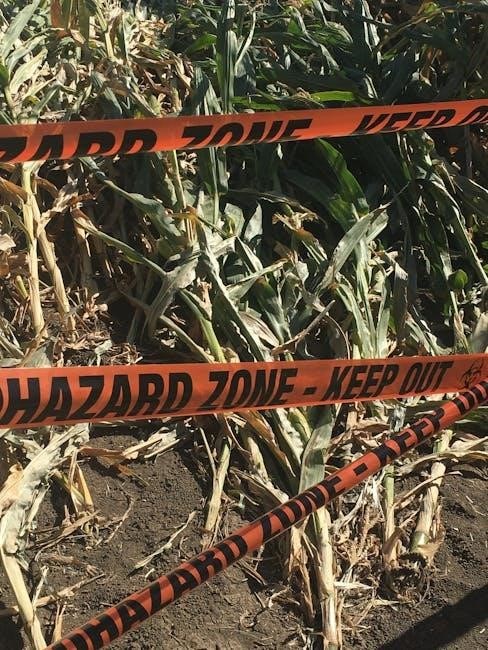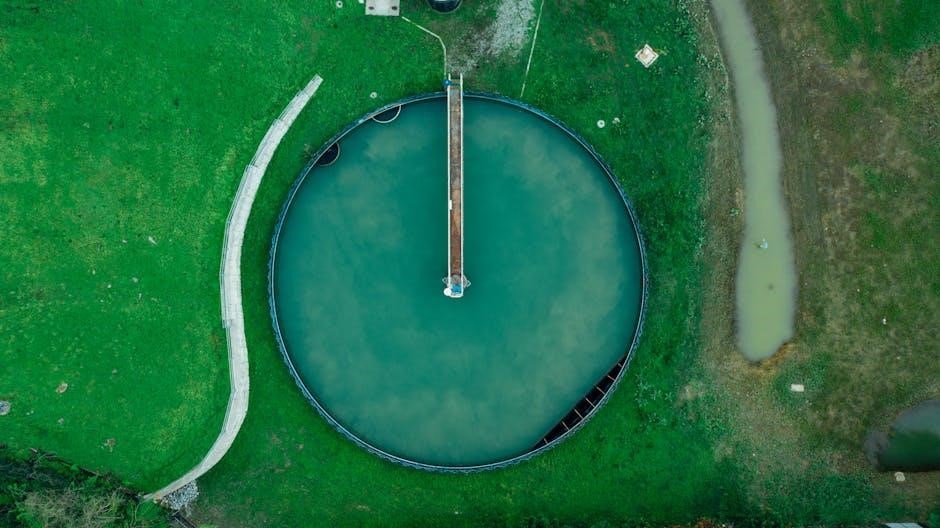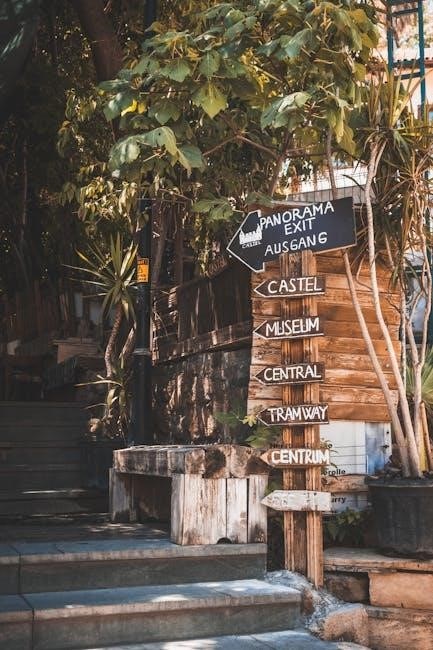Zone 10a‚ part of the USDA Hardiness Zones‚ offers a warm‚ frost-free climate ideal for year-round gardening. Its tropical-like conditions support exotic plants‚ lush landscapes‚ and abundant harvests‚ making it a paradise for gardeners seeking vibrant growth and diverse planting options.
1.1 Understanding USDA Hardiness Zones
USDA Hardiness Zones are a guide to determine which plants can thrive in specific areas based on average annual extreme minimum temperatures. These zones help gardeners understand their region’s climate and choose plants suitable for local conditions.
Zone 10a‚ with its mild winters and hot summers‚ is ideal for growing a wide variety of plants that prefer warmer climates‚ making it a versatile zone for gardening enthusiasts.
1.2 Climate Characteristics of Zone 10a
Zone 10a is characterized by its warm‚ subtropical climate with minimal frost risk. Winters are mild‚ with average temperatures ranging from 30°F to 35°F‚ while summers are hot and humid. This zone’s long growing season and lack of extreme cold make it ideal for cultivating a wide variety of plants year-round.
- Average annual extreme minimum temperature: 30°F to 35°F.
- Hot‚ humid summers with minimal frost risk.
- Geographically‚ it includes areas like parts of California‚ Florida‚ and Hawaii.
1.3 Unique Gardening Opportunities in Zone 10a
Zone 10a offers a unique opportunity for year-round gardening due to its warm‚ frost-free climate. Gardeners can cultivate exotic and tropical plants‚ enjoy extended growing seasons‚ and grow a diverse range of fruits‚ vegetables‚ and flowers. The ability to plant both warm- and cool-season crops throughout the year makes it a haven for gardening enthusiasts seeking vibrant and lush landscapes.
- Year-round plant growth due to minimal frost risk.
- Ideal for tropical and exotic species like dragon fruits and Bird of Paradise.
- Perfect for growing a wide variety of fruits‚ vegetables‚ and flowers.

Best Plants for Zone 10a
Zone 10a’s warm climate supports vibrant plants like Bird of Paradise‚ Plumeria‚ and Lantana. These heat-loving species thrive‚ adding lushness and color to gardens year-round.
2.1 Heat-Loving Perennials
Zone 10a’s warm climate is perfect for heat-loving perennials like Lantana‚ Bird of Paradise‚ and Plumeria. These vibrant plants thrive in full sun‚ offering stunning blooms and lush foliage year-round. Their resilience to high temperatures makes them ideal choices for gardens seeking color and life in Zone 10a’s subtropical environment.
2.2 Drought-Tolerant Plants
Drought-tolerant plants like Croton‚ Agave‚ and Texas Sage are well-suited for Zone 10a’s dry spells. These plants require minimal watering once established‚ making them ideal for water-conscious gardens. Their ability to thrive in arid conditions ensures beautiful‚ low-maintenance landscapes that adapt seamlessly to Zone 10a’s climate.
2.3 Mosquito-Repelling Plants
HGTV highlights mosquito-repelling plants like citronella‚ lemongrass‚ and lavender as excellent choices for Zone 10a gardens. These plants emit strong fragrances that deter mosquitoes‚ creating a more enjoyable outdoor space. Incorporating them into your garden design not only enhances beauty but also provides natural pest control‚ keeping your surroundings mosquito-free and pleasant throughout the year.
Vegetable Gardening in Zone 10a
Zone 10a’s warm climate allows year-round vegetable gardening. Grow heat-loving crops like tomatoes and peppers in summer‚ and cool-season crops like greens and carrots in winter. Plan carefully for optimal yields.
3.1 Warm-Season Crops
Warm-season crops thrive in Zone 10a’s hot summers. Tomatoes‚ peppers‚ cucumbers‚ and eggplants are ideal for planting during this time. These crops love the high temperatures and long growing season‚ making Zone 10a perfect for bountiful harvests. Ensure soil is well-prepared and watered consistently for optimal growth and flavor.
3.2 Cool-Season Crops
Cool-season crops in Zone 10a thrive during the mild winter months. Leafy greens‚ carrots‚ radishes‚ and beets are excellent choices for this period. Plant them in late fall to early winter for a bountiful harvest. These crops prefer cooler temperatures and consistent moisture‚ making Zone 10a’s winter ideal for growing crisp‚ flavorful vegetables year-round;
3.4 Year-Round Growing Opportunities
Zone 10a’s mild winters and warm summers allow for continuous gardening. With no frost threats‚ gardeners can grow a wide variety of crops throughout the year. From heat-loving vegetables in summer to cool-season crops in winter‚ the long growing season in Zone 10a offers endless opportunities for fresh harvests‚ making it a gardener’s haven for year-round production.

Fruit Trees and Exotic Fruits
Zone 10a’s warm climate is perfect for growing a variety of fruit trees and exotic fruits‚ such as dragon fruits and tropical species‚ which thrive in the region’s mild winters and hot summers.
4.1 Growing Dragon Fruits in Zone 10a
Dragon fruits thrive in Zone 10a’s warm‚ frost-free climate. They require well-draining soil and full sun. Regular watering‚ support structures‚ and proper fertilization ensure healthy growth. Pruning and pest control are essential for optimal fruit production in this ideal environment.
4.2 Tips for Planting Tropical Fruits
Planting tropical fruits in Zone 10a requires selecting varieties suited to the warm climate. Ensure well-draining soil and full sun for optimal growth. Water deeply but avoid overwatering to prevent root rot. Fertilize regularly and protect young plants from pests. Proper care leads to abundant fruit production and a thriving tropical garden.
Gardening Calendar for Zone 10a
Zone 10a offers year-round planting opportunities due to its warm climate. Gardeners can grow a variety of vegetables‚ fruits‚ and flowers‚ with specific timing for optimal results.
5.1 Month-by-Month Planting Schedule
A month-by-month planting schedule for Zone 10a ensures optimal growth throughout the year. Plant heat-loving vegetables like tomatoes and peppers in warmer months‚ while cooler months are ideal for greens and root vegetables. This guide helps gardeners maximize their yields and enjoy a diverse harvest by aligning planting times with the region’s climate.
5.2 Seasonal Tips for Gardeners
In Zone 10a‚ adapt your gardening strategies to the warm climate. Start seeds indoors during cooler months for spring planting. Prioritize drought-tolerant plants and efficient watering techniques. Regularly maintain soil health with organic amendments to support year-round growth. Incorporate companion planting and natural pest control methods to protect your garden. Plan ahead for seasonal crop rotations to maximize yields and plant diversity.

Soil Preparation and Care
Zone 10a gardens benefit from well-draining‚ nutrient-rich soil. Test pH levels and amend with compost or manure for optimal fertility. Mulch regularly to retain moisture and regulate soil temperature.
6.1 Soil Types Suitable for Zone 10a
Zone 10a thrives with well-draining soils like sandy loam or clay loam. These soil types retain essential nutrients while preventing waterlogging. Adding organic matter enhances fertility and structure‚ promoting healthy root development. For optimal plant growth‚ ensure soil pH ranges between 6.0 and 7.0‚ suitable for most vegetables‚ fruits‚ and ornamental plants.
6.2 Organic Amendments for Optimal Growth
Enhance soil health in Zone 10a with organic amendments like compost‚ aged manure‚ and worm castings. These improve soil structure‚ boost nutrient availability‚ and support beneficial microorganisms. Incorporate mulch to retain moisture and suppress weeds‚ while using natural fertilizers like fish emulsion or bone meal for sustained plant nutrition‚ ensuring vibrant growth and resilience in your garden.

Water Conservation and Irrigation
Efficient watering is crucial in Zone 10a’s hot climate. Use drip irrigation and soaker hoses to minimize evaporation‚ and water deeply in early mornings to reduce waste.
7.1 Efficient Watering Techniques
Implementing efficient watering techniques in Zone 10a is essential due to its arid summers. Drip irrigation and soaker hoses deliver water directly to roots‚ minimizing evaporation. Water plants deeply in the early morning to reduce runoff and optimize absorption. Mulching around plants helps retain soil moisture‚ while smart irrigation controllers adjust schedules based on weather conditions‚ ensuring water is used wisely and effectively throughout the growing season.
7.2 Drought-Tolerant Landscaping Ideas
Drought-tolerant landscaping is ideal for Zone 10a’s dry summers. Incorporate plants like Lantana‚ Texas Sage‚ and California Live Oak‚ which thrive in low-water conditions. Use gravel or decomposed granite instead of grass to reduce water usage. Succulents and water-efficient ground covers like Dymondia margaretae are excellent choices. These options create a beautiful‚ low-maintenance landscape while conserving water effectively.
Pest Control and Maintenance
In Zone 10a‚ common pests like aphids and whiteflies thrive. Use natural pest control methods and maintain garden health through regular monitoring‚ pruning‚ and mulching practices.
8.1 Common Pests in Zone 10a
Zone 10a gardens often face pests like aphids‚ whiteflies‚ and spider mites due to the warm climate. These insects thrive in the region’s mild winters and hot summers‚ targeting tender shoots and leaves. Regular monitoring is essential to prevent infestations and protect plants from damage.
8.2 Natural Pest Control Methods
Natural pest control methods are ideal for maintaining a healthy garden in Zone 10a. Use neem oil‚ insecticidal soap‚ and garlic sprays to repel pests. Encourage beneficial insects like ladybugs and lacewings to balance your ecosystem. Regularly prune infested areas and maintain plant health to deter pests naturally. These methods promote sustainability and protect your garden effectively.
Companion Planting
Companion planting enhances garden productivity and health by pairing plants that naturally deter pests or improve growth. This method optimizes space and supports biodiversity in Zone 10a’s warm climate.
9.1 Benefits of Companion Planting
Companion planting offers numerous benefits‚ including natural pest control‚ improved soil health‚ and enhanced growth. It deters harmful insects‚ attracts pollinators‚ and reduces disease risks. By optimizing space‚ it increases yields and promotes biodiversity‚ making it a sustainable and effective gardening practice for Zone 10a’s diverse and vibrant growing conditions year-round.
9.2 Best Companion Plant Combinations
Pair tomatoes with basil for improved flavor and pest deterrence. Marigolds and roses thrive together‚ repelling nematodes and attracting pollinators. Garlic and nasturtiums protect vegetables from aphids and other pests. These combinations enhance growth‚ reduce pests‚ and optimize space‚ making them ideal for Zone 10a’s diverse and vibrant gardening environment.
Container Gardening
Container gardening in Zone 10a allows gardeners to grow vegetables‚ herbs‚ and flowers in small spaces with proper drainage and sunlight‚ perfect for warm climates.
10.1 Growing Vegetables in Containers
Container gardening in Zone 10a is ideal for growing heat-loving vegetables like tomatoes‚ peppers‚ and cucumbers. Use large containers with drainage holes and full sun exposure. Soil should be well-draining‚ and fertilization is key for optimal growth. Regular watering and proper care ensure a bountiful harvest‚ even in small spaces‚ making container gardening a practical and rewarding option for Zone 10a gardeners.
10.2 Tips for Container Garden Success
For thriving container gardens in Zone 10a‚ choose large containers with drainage holes to prevent waterlogging. Use high-quality potting soil and ensure 6+ hours of sunlight daily. Protect plants from extreme heat with shade cloth if needed. Fertilize regularly and water deeply but avoid overwatering. Select heat-tolerant varieties and monitor soil moisture to ensure optimal growth and productivity in your container garden.

Seasonal Gardening Tips
Zone 10a’s warm climate allows year-round gardening. Plant heat-loving crops in summer and cool-season varieties in winter. Adjust watering and fertilization according to seasonal needs for optimal growth.
11.1 Winter Gardening in Zone 10a
Zone 10a’s mild winters make it ideal for growing cool-season crops like leafy greens‚ carrots‚ radishes‚ and beets. Plant these in late summer or early fall for a winter harvest. Protect plants from rare cold snaps with covers. This period is also great for planning next year’s garden‚ ensuring a continuous bounty of fresh produce.
11.2 Summer Gardening Strategies
Summer in Zone 10a is perfect for heat-loving plants like tomatoes‚ peppers‚ and cucumbers. Use efficient watering techniques to conserve water and mulch to retain soil moisture. Protect plants from extreme heat with shade cloth or planting heat-tolerant varieties. Regularly fertilize with organic amendments to promote healthy growth and encourage biodiversity in your garden for a thriving summer harvest.
Gardening in Zone 10a offers year-round opportunities with its warm climate. Explore additional resources like Gardenate and Kellogg Garden for tailored guides‚ ensuring a thriving and vibrant garden.
12.1 Summarizing Key Takeaways
Zone 10a’s warm‚ frost-free climate offers year-round gardening opportunities. Gardeners can grow heat-loving perennials‚ drought-tolerant plants‚ and exotic fruits like dragon fruits. The zone supports both warm-season and cool-season crops‚ making it ideal for diverse vegetable gardening. With proper planning and resource guidance‚ Zone 10a gardeners can create lush‚ vibrant landscapes tailored to their unique climate conditions.
12.2 Recommended Gardening Guides and Tools
Utilize resources like the Kellogg Garden Zone Planting Charts and Gardenate for detailed planting schedules. HGTV and Almanac.com offer valuable tips and hardiness zone maps. Download the Zone 10a Vegetable Planting Guide PDF for month-by-month advice. These tools provide expert insights‚ ensuring optimal growth and success in your Zone 10a garden throughout the year.